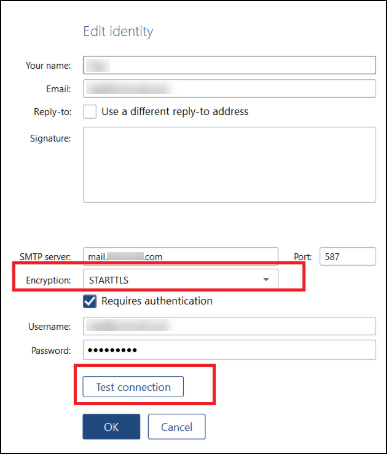
You may believe that you’re not liable for a customer’s internal security training and that there’s not much you can do to stop attacks like this. Cybercriminals frequently send email without authentication and copy the brand look and feel of banks, social networks, and other well-known entities to entice recipients into clicking through to fraudulent websites where user information like passwords or account numbers can be stolen.Ī phishing attack that impersonates your app could result in customers losing trust in your service and present an existential threat to your business. Phishing scams work much the same way, with the sender address changed to appear as if the message had originated from a legitimate sender. Why is this? Without mechanisms for email authentication, email spammers can change the source address of emails at will and try to sneak through spam filters and other defenses. Properly configuring email authentication standards like SPF, DKIM, and DMARC is one of the most important steps you can take to safeguard your app’s reputation. Think of it like a digital identification card: it protects your brand, identity, and reputation. If your SaaS application sends email-and nearly every modern app does-you definitely need to implement one or more forms of email authentication to verify that an email is actually from your product. Email authentication is essential for any SaaS app With DNS acting as the phone book of the Web, essentially establishing the legitimacy of domains through a rigorous process of analysis and verification, sophisticated email senders leverage email domain authentication as a fundamental component of security and deliverability. All three of these standards leverage the ubiquitous domain name system (DNS) for implementation. These email authentication standards supplement SMTP, the basic protocol used to send email, and most modern email systems support them.
#VERIFY EMAIL SENDER IDENTITY HOW TO#
This ultimately generates trust and confidence in recipients, which is why understanding how to authenticate email is crucial to organizations. Bear in mind that email sender authentication provides recipients of a message some level of certainty that the email message actually originated from the represented source. That’s why technical standards for email authentication are so important: they define a common approach to defining the rules for email authentication that any organization can implement. The receiving mail server acts upon the results of this authentication to deliver, flag, or even reject the message.Īs these steps make clear, in order for this process to work, the sender and the receiver both must participate.A mail server that receives email authenticates the messages it receives by checking details about an incoming email message against the rules defined by the domain owner.The email sender configures its mail servers and other technical infrastructure to implement and publish these rules.A business or organization that sends email establishes a policy that defines the rules by which email from its domain name can be authenticated.Although the specific technical implementation varies from approach to approach, in general, the process works something like this: There are several different approaches to email authentication, each with its own advantages and disadvantages. These standards were designed to supplement SMTP, the basic protocol used to send email, because SMTP does not itself include any authentication mechanisms. The most commonly used email authentication standards are SPF, DKIM, and DMARC.

#VERIFY EMAIL SENDER IDENTITY VERIFICATION#
In practice, we use the term “email authentication” to refer to technical standards that make this verification possible. Email authentication is most often used to block harmful or fraudulent uses of email such as phishing and spam. In other words, it provides a way to verify that an email comes from who it claims to be from. Email authentication is a technical solution to proving that an email is not forged.


 0 kommentar(er)
0 kommentar(er)
